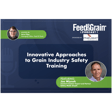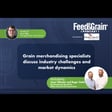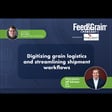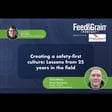Become a Creator today!Start creating today - Share your story with the world!
Start for free
00:00:00
00:00:01

Combating heat illness in the workplace
In the latest episode of the Feed & Grain Podcast, Steven Kilger and Joe Mlynek from Safety Made Simple discuss the critical issue of heat illness prevention during the summer. They cover the dangers of working in high temperatures, necessary precautions for employees and companies, and strategies to ensure everyone stays safe. Listen to the episode for valuable insights on protecting workers in extreme heat.

















